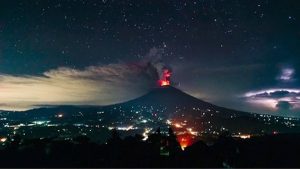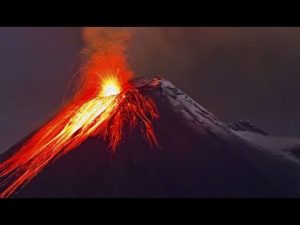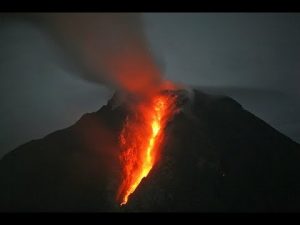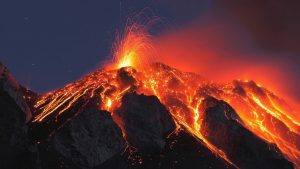The Mount Agung volcano is a spring of gushing lava, in Indonesian iconic tourist island of the Bali, ejected on Monday evening with a 2000 meter high flare.
The fountain of liquid magma was dynamic toward the end in 1963, when in excess of 1,000 individuals passed on and a few towns on its slants were leveled to the ground.
On Monday around 700 individuals fled to close-by clearing focus, 6 km far from the pit. Avoidance zone is a 4 km span around the hole. The Monday night eruptions were depicted as “deafening” and flung white hot rocks from the cavity, as per National Disaster Mitigation Agency representative Sutopo Purwo Nugroho.
Occupants saw blazing volcanic rocks tossed no less than 1.2 miles out of the hole, revealed the Indonesia’s national catastrophe relief office.
Bali’s worldwide airplane terminal was closed down for a large portion of multi day because of volcanic fiery remains from Agung, disturbing travel for many thousands. Bali sits on the pacific ring of flame, a chain of 450 volcanoes with visit tremors on the pacific edge.
Bali is in the westernmost parts of the Lesser Sundar Islands in the middle of Java and Lombok. It is popular for its lavish scenes, untamed life and silvery white shorelines.
The last significant emission of Agung in 1963 slaughtered around 1,600 individuals.
Indonesia is arranged on the Pacific “Ring of Fire”, an immense zone of geographical shakiness where the crash of structural plates causes visit shudders and major volcanic action.



